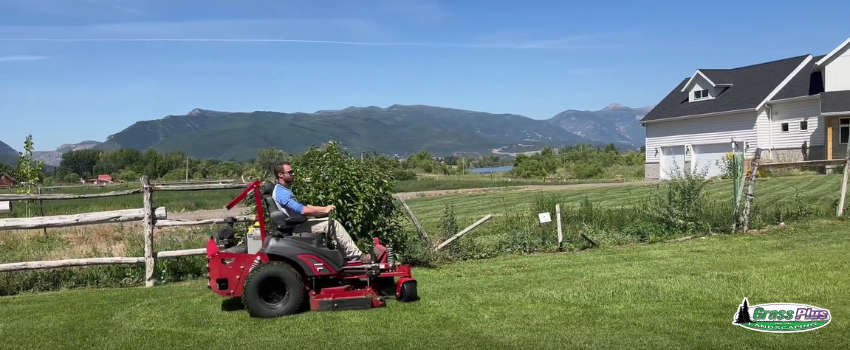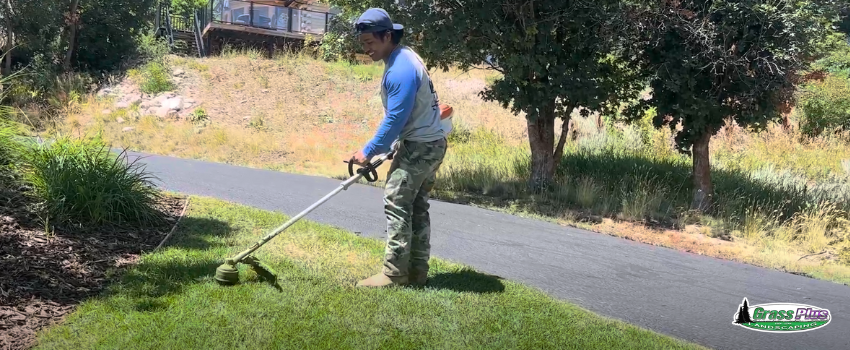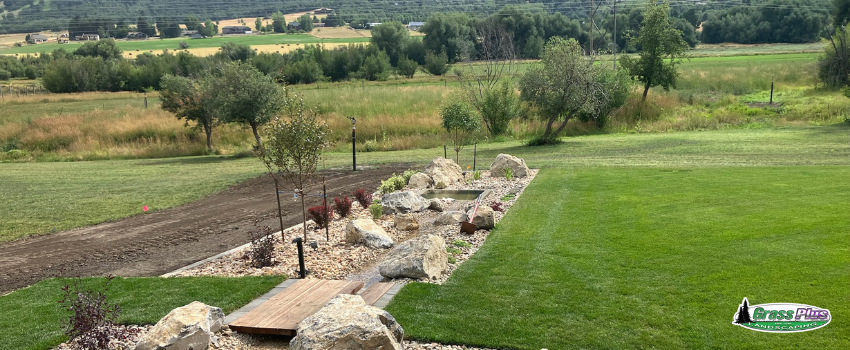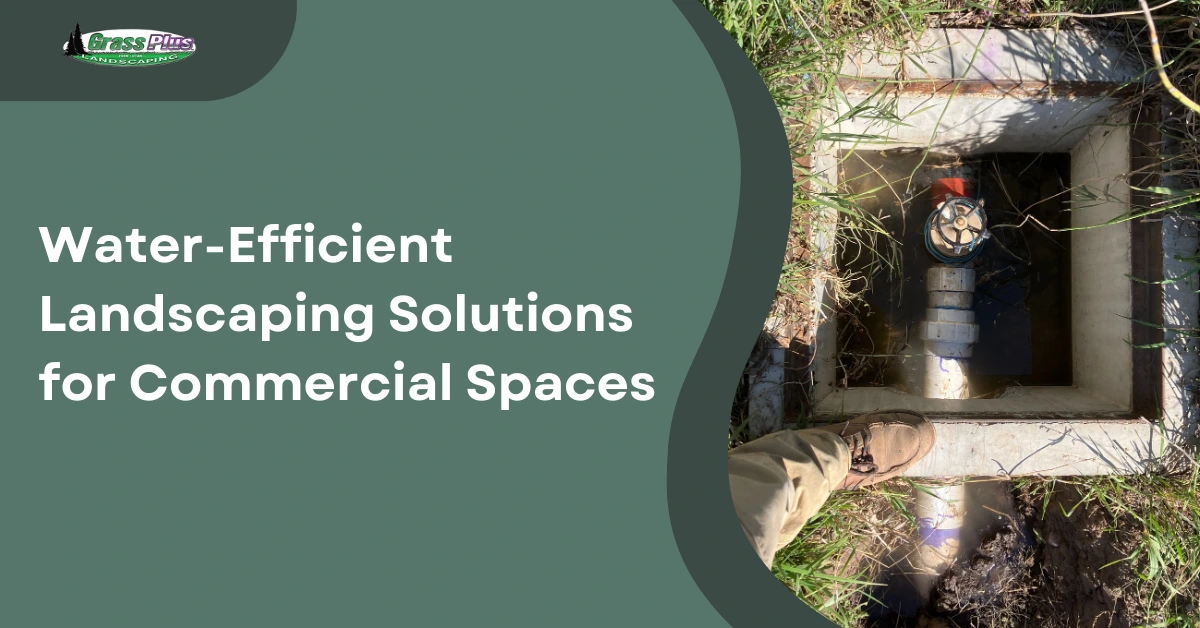Having a well-maintained lawn is like having a green oasis in your backyard. It provides a refreshing space for relaxation, a vibrant backdrop for gatherings, and a welcoming sight for anyone who passes by. However, achieving and preserving a beautiful lawn requires dedication, knowledge, and the right approach to lawn maintenance.
Whether you’re an experienced green thumb or a novice in lawn care, this ultimate lawn maintenance guide will equip you with the essential know-how to keep your yard in prime shape. From the basic care practices to the common pitfalls to avoid, we’ve got you covered!
What is lawn maintenance?
Before we proceed to the core details of this lawn maintenance guide, let us first answer the question: what is lawn maintenance? Lawn maintenance encompasses all the activities and practices involved in caring for a lawn. It includes regular mowing, watering, fertilizing, and weed control. The goal of lawn maintenance is to promote the health and aesthetic appeal of the grass and other plants in the yard.
A well-maintained lawn can significantly enhance the overall look of a property. It serves as a natural cooling system, absorbing heat and reducing temperatures in its surroundings. A healthy lawn also helps prevent soil erosion and acts as a filter, trapping dust and pollutants, thus improving air quality.
Why is lawn maintenance important?
“Now that you understand the concept of ‘what is lawn maintenance,’ it is time to dive deeper into its roles in this lawn maintenance guide. Think of lawn maintenance as giving your grass the VIP treatment. It’s all about creating the ideal conditions for your lawn to thrive. But why is it so important? Well, here are a few key aspects that benefit from regular lawn maintenance:
1. Environmental
A well-maintained lawn contributes to a healthier environment. Grasses and plants help produce oxygen, reduce carbon dioxide levels, and combat climate change.
2. Economic
Regular lawn maintenance can increase property value by up to 20%. It also saves energy and reduces utility bills by providing natural insulation and cooling effects.
3. Social
Lawns are often used for outdoor activities and can be a gathering place for friends and family. A beautiful lawn can enhance the overall aesthetics of a neighborhood and create a sense of pride for homeowners.
How can I effectively take care of my lawn?
When it comes to lawn maintenance, a professional-looking yard is within your reach. Here are some expert tips in this lawn maintenance guide to help you take care of your lawn like a pro:
1. Know your grass
Every grass type has different needs, so it’s essential to identify the grass in your lawn and understand its specific requirements for water, sunlight, and nutrients. This knowledge will help you develop a targeted lawn maintenance plan and avoid practices that could harm the grass.
2. Plan your mowing schedule
The ideal mowing frequency depends on the grass type, but as a general rule of lawn care maintenance, you should avoid cutting more than one-third of the grass’s height in a single mowing session.
3. Keep those blades sharp
Sharp mower blades are a must for achieving a professionally manicured lawn. Dull blades can tear the grass, leaving it vulnerable to diseases and discoloration. To ensure clean and precise cuts in lawn care maintenance, sharpen your mower blades at least once a season.
4. Let it breathe
In relation to lawn maintenance, aeration is like giving your lawn a breath of fresh air. It involves creating small holes in the soil to alleviate compaction and improve the movement of water, air, and nutrients to the grass’s roots. Depending on your grass type, you can aerate in spring or fall when the grass is actively growing.
5. Feed it right
Proper fertilization is the key to a well-nourished and healthy lawn. Before applying any fertilizer for lawn care maintenance, it’s best to have your soil tested to determine its nutrient needs accurately. This will help you select the right type and amount of fertilizer for your grass. Another important aspect to consider in this lawn maintenance guide is over-fertilizing your lawn. Over-fertilizing can do more harm than good, so always follow the recommended application rates.
6. Water wisely
Watering is essential in lawn maintenance, but it’s crucial to do it wisely. Different grass types have different water requirements, so knowing how much water your grass needs is necessary. Generally, watering deeply and infrequently is better than frequent shallow watering.
It’s a good idea to let your grass enter dormancy during the hot summer months. Don’t worry; it’s just a natural way for the grass to conserve energy and survive the heat. But remember, even in dormancy, the grass still needs some water, so don’t completely neglect it!
7. Weed it out
Weeds are like uninvited guests, and a pro in lawn maintenance services knows how to show them the way out. Regular weeding is essential for maintaining a pristine lawn. You can use hand pulling, herbicides, or cultural practices like proper mowing and watering to keep those pesky plants in check. The best approach will depend on the weed type and the extent of the infestation.
8. Address problems promptly
Time is of the essence when it comes to lawn maintenance. Whether it’s a pest invasion, a disease outbreak, or a bare patch that needs some attention, addressing the problem promptly is the mark of a pro. Regular inspections are an excellent practice to catch any issues early and nip them in the bud before they cause significant damage.
9. Give it some love and care
Nothing beats some tender love and care in lawn maintenance services. Keep an eye on your grass, and if you notice any dry or discolored areas, act quickly to determine the cause and provide the necessary care. It could indicate an underlying problem, like compacted soil or a sprinkler issue.
What is the biggest lawn care mistake?
The biggest mistake you can make in lawn care is neglecting it. Like any living thing, grass needs regular attention and lawn care maintenance to thrive. If you ignore your lawn and let it become overgrown, it can create many problems, including weed and pest infestations, disease, and even damage to your property.
What are the common pitfalls to avoid in lawn maintenance?
Now that you know the secrets to pro-level lawn maintenance services, let’s talk about what you should avoid in this lawn maintenance guide:
1. Cutting the grass too short
Going for the “scalped” look is a no-no in lawn maintenance services. When you cut the grass too short, you rob it of its ability to produce enough food through photosynthesis. It weakens the grass and makes it more susceptible to stress, disease, and weed invasion. Remember, each grass type has an ideal height range, so stick to it for a healthy and happy lawn!
2. Overdoing the watering
While watering is essential, drenching your lawn like a water park is a mistake in lawn care maintenance. Over-watering can suffocate the grass by filling the air spaces in the soil with water, depriving the roots of much-needed oxygen. It also encourages shallow root growth, making the grass less drought-resistant. So, avoid overdoing it and let Mother Nature lend a hand when possible.
3. Underestimating the power of sharp blades
In this lawn maintenance guide, remember not to underestimate the power of sharp mower blades. Dull blades can tear and damage the grass, giving it a ragged appearance and leaving it vulnerable to infections. So, before starting your lawn maintenance session, take a quick look at those blades and sharpen them if needed.
5. Neglecting soil health
A healthy lawn starts with healthy soil, but one common mistake homeowners make is neglecting their soil. To avoid this mistake, you can do a simple soil test or send a sample to a local soil testing laboratory for more accurate analysis.
6. Using the wrong fertilizer
Using the wrong fertilizer or applying it at the wrong time can do more harm than good to your lawn. It’s like giving your grass a meal it can’t digest. Different grass and soil types have specific nutrient requirements, and using a one-size-fits-all approach to fertilization is a recipe for disaster. To avoid this mistake in this lawn maintenance guide, you should identify the type of grass in your lawn.
7. Ignoring early signs of lawn problems
Many homeowners make the mistake of thinking that lawn maintenance is just about mowing and watering, but in reality, it’s a proactive effort to prevent and address issues before they escalate. To avoid this mistake, it’s crucial to be vigilant and catch any problems in their early stages. Look for signs of trouble, such as brown patches, thinning grass, and weeds.
What causes diseases in lawns?
Lawn diseases can be caused by various factors, including:
1. Fungal infections
Fungi thrive in moist environments and can infect grass through spores. Overwatering, poor drainage, and excessive thatch can create the ideal conditions for fungal diseases.
2. Contaminated equipment
Using contaminated lawn care equipment, such as mowers or trimmers, can spread diseases from infected areas to healthy lawn parts.
3. Unhealthy soil
Soil lacking proper nutrients or an imbalanced pH level can contribute to lawn diseases. Poor soil health weakens the grass and reduces its ability to fight infections.
How can I prevent diseases from spreading on my lawn?
To prevent lawn diseases, you can take the following measures:
1. Practice good lawn care
Regularly mow your lawn at the appropriate height for your grass type and ensure your mower blades are sharp. Avoid overwatering and provide proper drainage to prevent excessive moisture. Additionally, remove any thatch buildup, as it can harbor disease-causing organisms.
2. Monitor your lawn
Regularly inspect your lawn for signs of disease, such as discolored patches, unusual growth, or spots. Early detection can help prevent the spread of diseases, so if you notice any issues, take prompt action.
3. Ensure clean equipment
Clean and sanitize your lawn care equipment after each use, especially if you’ve been working on an infected area. This will help prevent the spread of diseases to healthy parts of the lawn.
4. Address soil problems
If you suspect soil problems like nutrient deficiencies or pH imbalances, consider implementing the necessary corrective measures. This can involve adding organic matter, applying targeted fertilizers, or adjusting the soil pH to create optimal growing conditions for your grass.
5. Observe proper timing
Some diseases are more prevalent during specific times of the year. Following a preventive treatment plan, such as applying fungicides at the right time, can reduce the risk of disease outbreaks.
Is not mowing your lawn good for the environment?
Not mowing your lawn can be beneficial for the environment in certain circumstances. Here are a few situations where you can let your grass grow:
1. Encouraging biodiversity
Allowing your lawn to grow tall and wild can create a habitat for various plants, insects, and small animals. It promotes biodiversity and supports the ecosystem by providing food and shelter for pollinators and other wildlife.
2. Conserving water
Longer grass can retain more moisture, reducing the need for frequent watering. If you live in an area with water scarcity or during dry spells, not mowing your lawn can help conserve water.
3. Preventing soil erosion
Tall grass acts as a natural barrier, reducing the impact of rainfall and preventing soil erosion. If your property is prone to erosion, leaving the grass uncut can help stabilize the soil.
4. Reducing carbon emissions
Skip the mowing, and you’ll also reduce carbon emissions. Lawnmowers, especially those powered by gas, contribute to air pollution. By not mowing, you’re doing your part to minimize the environmental impact.
However, it’s important to note that not mowing your lawn may not be suitable in all situations. It depends on your preferences, the grass type, and the lawn’s intended use. If you opt for longer grass, managing it properly to avoid issues like weed overgrowth is essential.
What is sustainable lawn care?
Sustainable lawn care is a method of maintaining a healthy and attractive lawn while minimizing negative impacts on the environment. It conserves resources, reduces chemical inputs, and promotes natural processes. The goal is to create a balance between environmental responsibility and outdoor aesthetics.
Sustainable lawn maintenance services typically involve the following practices:
1. Proper watering
Sustainable lawn care maintenance emphasizes efficient water use. It involves watering the grass deeply but infrequently to encourage deep root growth and reduce water waste. Watering in the early morning or late evening minimizes evaporation.
2. Grasscycling
Grasscycling is the practice of leaving grass clippings on the lawn after mowing. It allows the clippings to decompose and return nutrients to the soil, reducing the need for synthetic fertilizers.
3. Using organic fertilizers
Organic fertilizers, such as compost and natural soil amendments, are preferred in sustainable lawn maintenance services. They provide nutrients to the grass while improving soil health and minimizing the risk of water pollution.
4. Appropriate mowing
Sustainable lawn care maintenance emphasizes mowing at the correct height for the grass species. It ensures the grass shades the soil, reducing water evaporation and weed growth. Avoiding excessive mowing helps conserve energy and promotes a natural, low-maintenance look.
5. Soil testing
Soil testing is a critical component of sustainable lawn maintenance services. It helps determine the specific nutrient requirements of the grass, allowing for precise fertilizer application and minimizing nutrient runoff.
6. Using alternative lawn areas
Sustainable lawn care maintenance encourages using alternative lawn areas, such as native plantings and rain gardens, or even replacing some lawn areas with hardscapes like patios or decks. This reduces the overall size of the lawn, minimizing water and chemical use while providing a diverse and eco-friendly landscape.
7. Choosing the right grass
Sustainable lawn maintenance services involve selecting the right type of grass for your specific climate and soil conditions. Native grasses are often the best choice as they are adapted to the local environment, requiring less water, fertilizer, and pesticides.
8. Implementing integrated pest management (IPM)
Sustainable lawn care prioritizes the use of integrated pest management strategies. This approach focuses on proactive measures like regular monitoring, cultural practices, and biological controls to manage pests effectively while minimizing the need for chemical treatments.
9. Regular maintenance
Sustainable lawn care requires regular maintenance, including proper mowing, aerating, and dethatching. Well-maintained lawns can better resist pests, diseases, and weeds, reducing the need for chemical interventions.
The Bottom Line
Caring for your lawn like a pro requires knowledge, time, and effort. Now that you understand the question of ‘what is lawn maintenance,’ you can avoid the common mistakes mentioned above and follow the best practices of lawn maintenance to create a healthy and vibrant green space that enhances the beauty of your home.
You can also create a sustainable lawn, which is beneficial for the environment and your wallet. By following the principles of sustainable lawn care, you can reduce water consumption, minimize the use of chemicals, and create a beautiful and healthy lawn that will stand the test of time.
Ready to experience the joy of a well-maintained lawn?
When it comes to professional lawn maintenance, Grass Plus Inc. is a name you can trust. We have been providing quality lawn maintenance in Eden, UT for years, and our experience speaks for itself.
Contact Grass Plus Inc. today, and let us take care of the rest! We are your partners in achieving a beautiful and healthy lawn.








